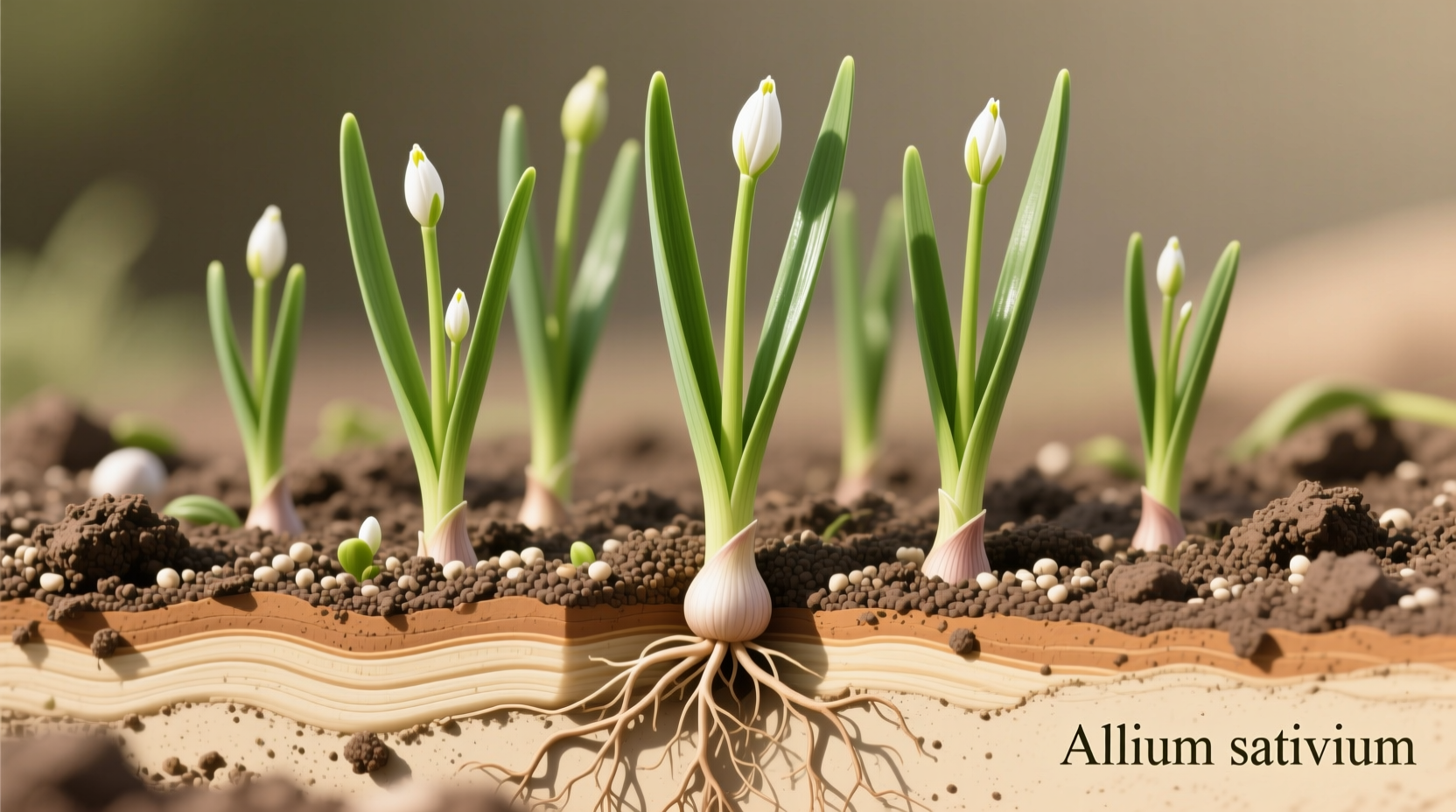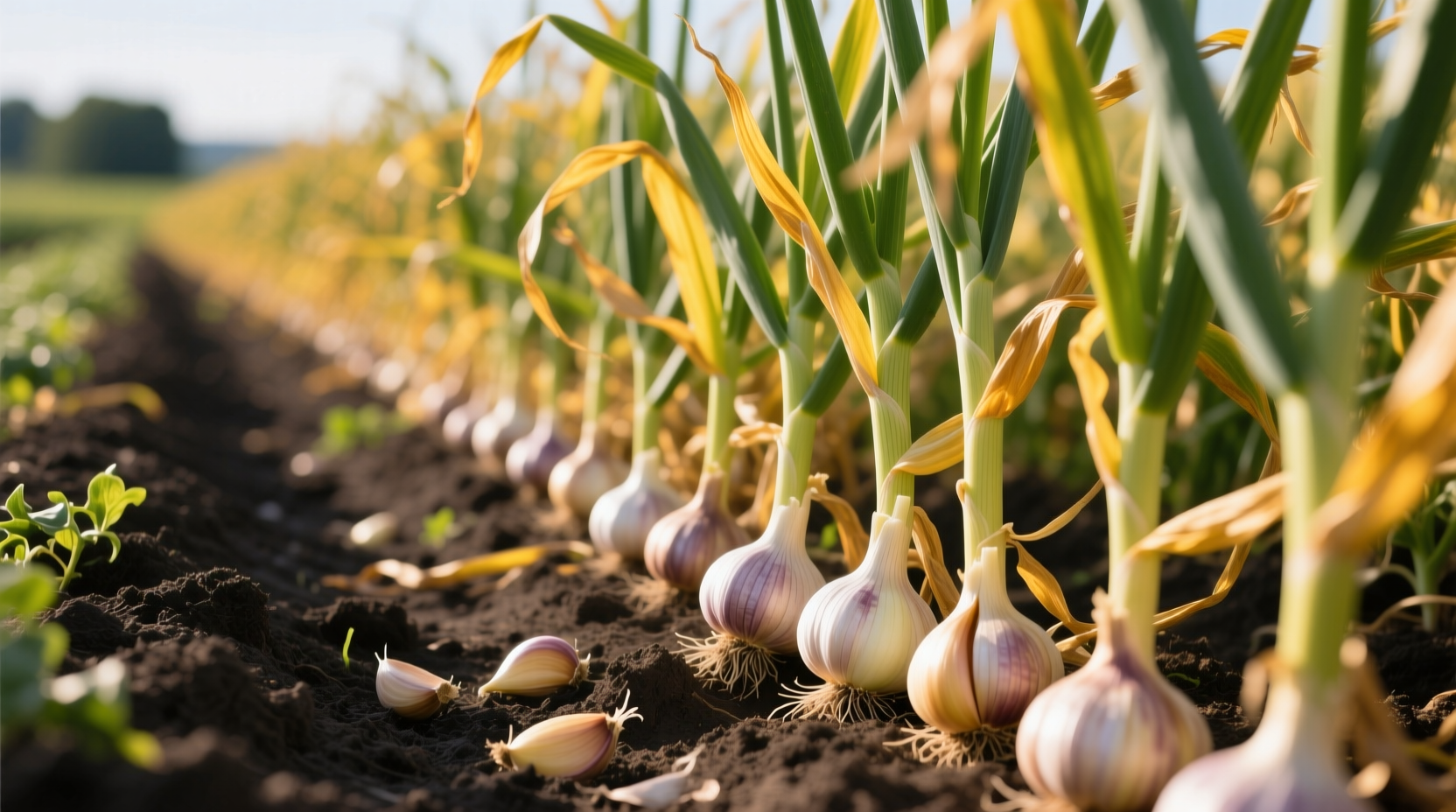Garlic grows primarily in temperate climate regions worldwide, with China producing over 80% of the global supply. The top commercial garlic-growing countries include China, India, South Korea, Egypt, and Russia. For home gardeners, garlic thrives in USDA hardiness zones 3-9, requiring well-drained soil, full sun exposure, and a cold period for proper bulb formation.
Discover exactly where garlic grows around the world and how you can successfully cultivate it in your own garden. This comprehensive guide reveals the geographic regions, climate conditions, and soil requirements that make garlic flourish - whether you're curious about global production or planning your own garlic patch.
Global Garlic Production Hotspots
Garlic cultivation spans continents, but certain regions dominate global production. Understanding where garlic grows commercially helps explain the varieties available in your local market and their unique flavor profiles.
| Country | Annual Production (Metric Tons) | Percentage of Global Supply | Primary Growing Regions |
|---|---|---|---|
| China | 23,000,000 | 80.7% | Shandong, Henan, Jiangsu provinces |
| India | 1,350,000 | 4.7% | Maharashtra, Madhya Pradesh, Gujarat |
| South Korea | 330,000 | 1.2% | Dolan, Taean, Haenam |
| Egypt | 250,000 | 0.9% | Nile Delta region |
| Russia | 200,000 | 0.7% | Siberia, Central Black Earth region |
Source: UN Food and Agriculture Organization (2023)
China's dominance in garlic production stems from ideal growing conditions in eastern provinces, where farmers have cultivated garlic for over 2,000 years. The Shandong province alone accounts for approximately 30% of China's total garlic output. This concentration explains why most supermarket garlic originates from China, though specialty markets often carry region-specific varieties from other growing areas.
Garlic's Natural Habitat Requirements
Understanding where garlic grows naturally helps explain its cultivation needs. Garlic (Allium sativum) evolved in the mountainous regions of Central Asia, particularly in what is now Kyrgyzstan and Tajikistan. This origin story reveals why garlic thrives under specific conditions:
- Climate: Garlic prefers cool to mild temperatures during growth (50-70°F / 10-21°C) with a cold period (32-50°F / 0-10°C) for 4-8 weeks to trigger proper bulb formation
- Soil: Well-drained, loamy soil with pH between 6.0-7.5; heavy clay soils cause bulb rot
- Sunlight: Minimum 6 hours of direct sun daily; 8+ hours preferred for maximum bulb development
- Water: Consistent moisture during active growth, reduced during bulb maturation
These requirements explain why certain regions excel at garlic production while others struggle. For example, Egypt's Nile Delta provides the perfect combination of fertile soil, consistent irrigation, and mild winter temperatures that allow for year-round garlic cultivation.
Hardneck vs. Softneck: Regional Preferences Explained
Not all garlic grows equally well in every region. The two main garlic types have distinct geographic preferences that affect where they grow successfully:
Garlic Cultivation Timeline
- 5,000 BCE: Earliest evidence of garlic cultivation in Central Asia
- 3,700 BCE: Garlic found in Egyptian pharaohs' tombs
- 200 BCE: Garlic cultivation documented in Chinese agricultural texts
- 16th Century: Spanish explorers introduce garlic to the Americas
- 19th Century: Commercial garlic farming begins in California
- 1980s: China emerges as dominant global producer
Source: USDA Agricultural Research Service
Hardneck Garlic (Allium sativum var. ophioscorodon) - Thrives in colder climates (USDA zones 3-7). Requires vernalization (cold period) to form bulbs properly. Produces a flower stalk (scape) and has fewer, larger cloves arranged around a central stem. Popular varieties include Rocambole, Porcelain, and Purple Stripe. Best grown in regions with distinct seasons like northern Europe, Canada, and northern United States.
Softneck Garlic (Allium sativum var. sativum) - Adapts better to warmer climates (USDA zones 7-9). Doesn't require a cold period, making it suitable for southern regions. Features multiple layers of smaller cloves and flexible necks ideal for braiding. Includes Artichoke and Silverskin varieties. Dominates commercial production in California, China, and Mediterranean regions.
Can You Grow Garlic in Your Region?
Whether you're gardening in Florida or Finland, understanding where garlic grows successfully in your specific location determines which variety to plant:
- Cold climates (zones 3-5): Plant hardneck varieties in fall for harvest the following summer. Mulch heavily to protect from extreme cold.
- Moderate climates (zones 6-7): Both hardneck and softneck varieties work well. Plant in fall for largest bulbs.
- Warm climates (zones 8-9): Plant softneck varieties in late winter for spring harvest. Avoid fall planting as warm soil prevents proper root development.
- Tropical regions (zones 10+): Garlic struggles to form proper bulbs. Consider elephant garlic (a leek relative) as an alternative.
According to research from Cornell University's College of Agriculture and Life Sciences, gardeners in warmer zones can improve garlic success by refrigerating cloves for 40 days before planting to simulate winter conditions. This technique, called "vernalization," tricks the garlic into thinking it experienced winter, triggering proper bulb formation.
From Field to Market: How Growing Regions Affect Your Garlic
The geographic origin of your garlic significantly impacts flavor, storage life, and culinary applications. Understanding where garlic grows commercially helps you select the best variety for your cooking needs:
- Chinese garlic: Mild flavor, excellent storage (9-12 months), uniform size - ideal for everyday cooking
- California garlic: Medium heat, 6-8 month storage - versatile for roasting and sauces
- French garlic: Intense flavor, shorter storage (4-6 months) - perfect for finishing dishes
- Italian garlic: Complex flavor profile, medium storage - excellent for raw applications
Source: University of Minnesota Extension
When shopping for garlic, look for firm bulbs with tight skins. Avoid garlic with soft spots, green sprouts, or papery skins that have separated from the cloves. Local farmers markets often carry regionally adapted varieties that perform better in your specific climate if you decide to try growing your own.

Practical Tips for Home Garlic Cultivation
Whether you're in a major garlic-growing region or pushing the boundaries of where garlic grows, these practical tips ensure success:
- Planting time: In cold climates, plant 4-6 weeks before first frost. In warm climates, plant when soil cools to 50°F (10°C)
- Soil preparation: Amend with 3-4 inches of compost and ensure proper drainage
- Planting depth: Place cloves 2 inches deep, pointy end up, 4-6 inches apart
- Watering: Water regularly until 2 weeks before harvest, then reduce to prevent rot
- Harvest timing: When 1/3 of leaves turn brown (typically late spring to early summer)
Remember that garlic takes 6-9 months from planting to harvest. Patience rewards you with homegrown garlic that typically has more complex flavor than store-bought varieties. For best results, save your largest cloves from each harvest for replanting - this practice gradually adapts your garlic to your specific soil and climate conditions.











 浙公网安备
33010002000092号
浙公网安备
33010002000092号 浙B2-20120091-4
浙B2-20120091-4